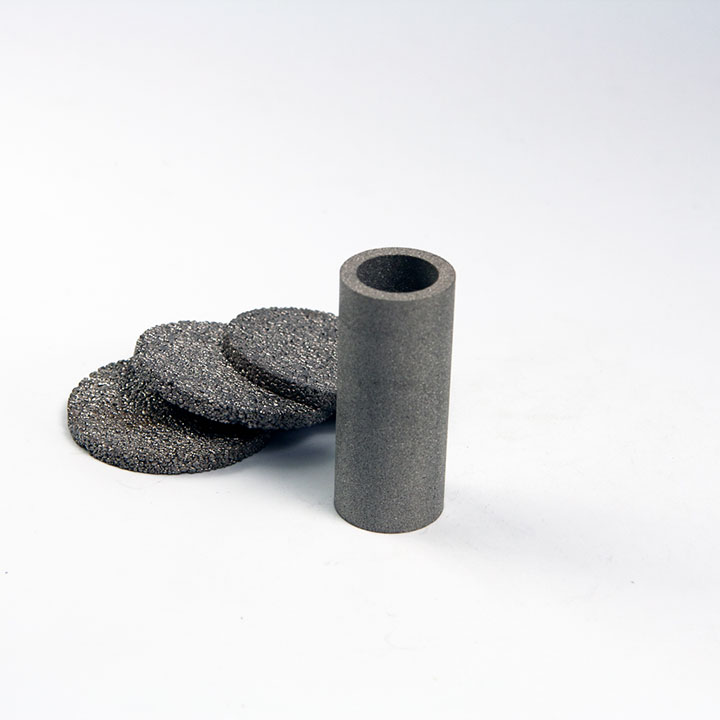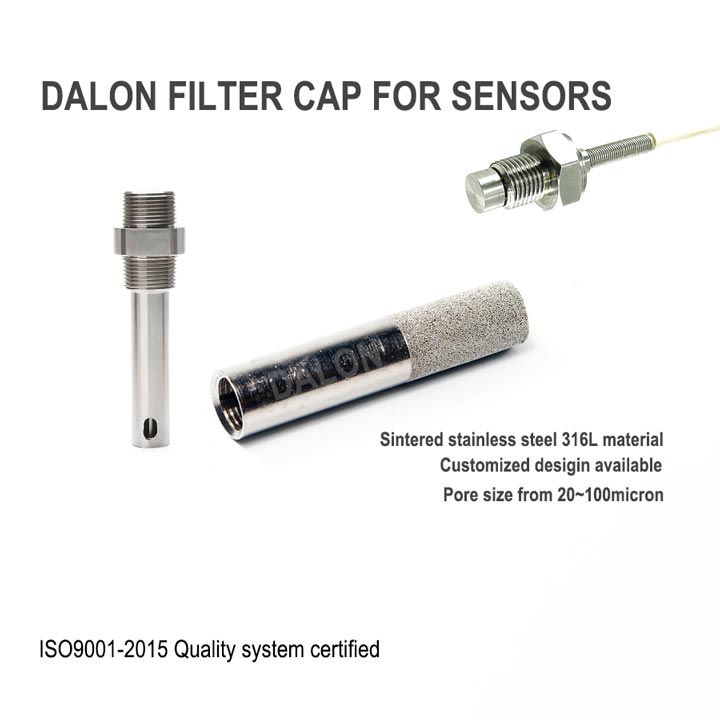Filtration is a core requirement across nearly every industrial process—from chemical plants and energy systems to pharmaceuticals and aerospace engineering. As operations become more extreme in pressure, temperature, and chemical exposure, so too does the need for filtration components that can survive and perform in these environments.
Enter the sintered stainless steel filter—a durable, rigid, porous filtration medium engineered to withstand intense conditions while delivering consistent, high-performance filtration. This article explores what sintered stainless steel filters are, how they’re made, their key features, and where they’re most effectively used.

What Is a Sintered Stainless Steel Filter?
A sintered stainless steel filter is a type of porous metal filtration element created by compacting stainless steel powder into a desired shape (such as discs, tubes, or cartridges) and then sintering it—heating it below its melting point to fuse the particles.
This process creates a rigid, permeable structure with interconnected pores, which allows gases or fluids to pass through while trapping contaminants inside. Unlike surface filters, sintered metal filters work via depth filtration, providing enhanced dirt-holding capacity and durability.
Key Differences from Woven Mesh or Cartridges:
- Depth vs. surface filtration
- No moving fibers or layered media
- Excellent reusability
- Superior mechanical and chemical strength
How Are Sintered Stainless Steel Filters Made?
The performance of a sintered filter begins with its manufacturing process—powder metallurgy. Below are the primary stages:
1. Powder Selection and Preparation
- Particle size range: 5–100 µm
- Material: Stainless steel 304, 316L, or specialty grades like 904L
- Optional: Alloy blending or additives for corrosion resistance or conductivity
2. Cold Compaction
- Powder is pressed into a solid “green body” using dies
- Shapes include discs, tubes, cones, and plates
3. Sintering
- Heated to 1100–1300°C (2012–2372°F)
- Done in controlled atmosphere (e.g., hydrogen, argon) to prevent oxidation
- Particles bond at contact points, forming an integrated porous matrix
4. Post-Processing (Optional)
- Calendering: Roll-compacting for pore size uniformity
- Electropolishing: Removes micro-burrs; improves purity
- Passivation: Enhances corrosion resistance by creating a chromium oxide layer
Technical Characteristics
| Property | Details |
|---|---|
| Pore Size | 0.5–100 µm (customizable for application) |
| Porosity | 30–50% standard (up to 70% in high-flow variants) |
| Temperature Range | Up to 900°C (1652°F) for SS316L |
| Pressure Rating | From 10 to 150 bar (145–2175 psi), depending on wall thickness |
| Corrosion Resistance | Excellent (pH 1–14 with 316L, halide resistance in 904L/Alloy 20) |
| Form Factors | Tubes, discs, bushings, flanged components, multi-layer cartridges |
Core Advantages Over Other Filter Types
| Feature | Sintered SS Filter | Woven Mesh | Polymer Filters | Ceramic Filters |
|---|---|---|---|---|
| Reusability | 100+ cleaning cycles | Limited | Disposable | Limited |
| Mechanical Strength | Excellent (vibration-resistant) | Poor | Low | Moderate (brittle) |
| Thermal Resistance | Up to 900°C | <400°C | <150°C | >1000°C |
| Chemical Resistance | Excellent | Limited | Limited | Excellent |
| Filtration Mode | Depth | Surface | Depth | Surface |
| Custom Geometry | Yes (welded/machined) | Limited | No | No |
Common Applications by Industry
1. Harsh-Environment Filtration
Oil & Gas
- Filters acid gases (H₂S), hydraulic oil, and downhole injection fluids
- Offshore rigs and subsea control modules
Chemical Processing
- Used in acid, solvent, or caustic fluid systems
- Reactor feed lines, catalyst recovery units, and degassing columns
2. High-Temperature Applications
Exhaust Gas Recirculation (EGR)
- Captures soot and particulates in diesel or CNG engines
- Resistant to heat shock and clogging
Molten Metal Filtration
- Filters aluminum or steel during casting
- Removes inclusions, slag, and oxide skins
3. Precision Industries
Semiconductor Fabrication
- ISO Class 0–1 gas filtration for nitrogen, argon, and CDA
- Bubble-point testing ensures no outgassing or contamination
Pharma/Biotech
- Sterile filtration of gases and solvents
- Used in fermenters, bioreactors, WFI tanks, and CIP loops
- Validated per USP <661>, ASTM F316
4. Pneumatic and Hydraulic Systems
Aviation Hydraulics
- Filters phosphate ester and MIL-H-5606 fluids at 3000+ psi
- Integral to landing gear and flight control systems
Compressed Air Lines
- Removes condensate, oil aerosols, and particulates
- Reduces downstream maintenance and improves equipment life
Real-World Example
Application: Chemical plant filtration of 30% sulfuric acid
- Filter Material: Sintered SS316L
- Operating Temp: 80°C (176°F)
- Pore Size: 10 µm
- Configuration: Dual-layered for depth retention
- Maintenance: Monthly CIP using 5% NaOH followed by DI rinse
- Lifespan: Exceeded 5 years in continuous use
Cleaning and Maintenance Best Practices
Sintered stainless steel filters are designed for repeated cleaning:
Cleaning Methods:
- Ultrasonic bath: 40 kHz with 10% citric acid or alkaline detergent
- Chemical soaking: NaOH (organics) or HNO₃ (inorganics)
- Thermal treatment: Bake-out at 450–600°C for carbon removal
- Backflushing: Reverse flow with compressed air or solvent
Validation:
- Bubble-Point Test: Measures pore integrity (ASTM F316)
- Flow Rate Verification: Compare post-cleaning vs baseline ΔP
- Microscopic Inspection: Check for cracking or pore blockage
🔧 Note: Filters used in sanitary applications should also pass TOC/swab tests as per FDA or GMP protocols.
Customization Options
Every application is different, which is why sintered stainless steel filters can be custom-engineered:
| Feature | Options |
|---|---|
| Pore Size | 0.5–100 µm (single or dual-layer) |
| Length/Diameter | ID: 5–200 mm; Length: up to 1000 mm |
| Shape | Disc, tube, cone, flanged, threaded, cartridge |
| Material Grade | SS304, SS316L, 904L, Alloy 20, Inconel |
| Surface Finish | Electropolished, passivated, grit-blasted |
| End Connections | Welded caps, threaded ports, ANSI/DIN flanges |
DALON provides full bubble-point testing, mill certifications, and flow rate data for each custom filter.
Frequently Asked Questions (FAQ)
Q1: Can sintered stainless filters be used in cleanrooms?
Yes. Electropolished SS filters are suitable for ISO Class 1–5 environments and do not shed fibers or particles.
Q2: How long do sintered stainless steel filters last?
Depending on cleaning frequency and process conditions, they typically last 5–10 years or more.
Q3: Are they suitable for steam sterilization?
Absolutely. They can be autoclaved or steam-in-place (SIP) up to 134°C.
Q4: Can I clean a sintered filter in place (CIP)?
Yes. Most SS filters are compatible with clean-in-place or steam-in-place systems, especially in food and pharmaceutical settings.
Q5: What testing should I request with a custom filter?
- Bubble-point pressure test
- Flow rate test at operating ΔP
- Visual and dimensional inspection report
- MTR (Mill Test Report) for material traceability
Sintered stainless steel filters combine mechanical resilience, chemical durability, and precision performance. Whether you’re managing high-pressure hydraulics, filtering solvents in a pharmaceutical line, or purifying gases in a semiconductor fab, these filters offer unbeatable longevity, cleanliness, and customization.
Designed for repeated cleaning and aggressive process conditions, sintered stainless steel filters outperform traditional mesh, polymer, or ceramic alternatives across the board.
Explore our complete line of sintered stainless steel filters here, or request a quote for custom sizes and configurations built for your specific system.




